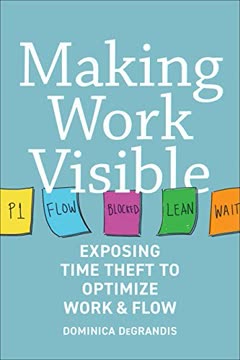Key Takeaways
1. The Five Thieves Steal Your Most Valuable Asset: Time.
We allow thieves to steal time from us, day after day after day.
Identify the culprits. Our precious, nonrenewable time is constantly being pilfered by five insidious "time thieves" that operate right under our noses. These culprits are often invisible, making their crimes hard to detect until the damage is already done, leading to exhaustion, missed deadlines, and poor quality. Recognizing these thieves is the first critical step to reclaiming control over your work and life.
Meet the thieves:
- Too Much Work-in-Progress (WIP): Starting more than you can finish, leading to context switching and delays.
- Unknown Dependencies: Unforeseen requirements or reliance on others that block progress.
- Unplanned Work: Interruptions, fire drills, or sudden strategic shifts that derail planned efforts.
- Conflicting Priorities: When everything is urgent, nothing truly is, causing confusion and scattered effort.
- Neglected Work: Important tasks or maintenance that sit idle, eventually becoming critical emergencies.
Unmasking their impact. These thieves don't just steal time; they erode quality, inflate costs, and foster a culture of relentless heroism that is unsustainable. Understanding their modus operandi is essential to building systems that protect your capacity and ensure valuable work gets done efficiently.
2. Visibility is the First Step to Reclaiming Control.
It should come as no surprise that we can better manage what we can see.
See the unseen. Knowledge work, unlike physical labor, is largely invisible, making it incredibly difficult to manage. Our thoughts, problem-solving processes, and the true state of our work remain hidden from colleagues and leaders. This lack of visibility leads to mental overload, stress, and an inability to communicate capacity or progress effectively.
Leverage visual power. The human brain is wired to process visual information efficiently, with approximately 20% of our neurons dedicated to visual analysis. Making work visible, often through simple Kanban boards, taps into this innate ability, providing immediate clarity and enabling better decision-making. An "elegant visual" is not just pretty; it's useful, relevant, and honest, depicting workflow and improving communication at a glance.
Start simple, gain insights. The most basic Kanban board—with "To Do," "Doing," and "Done" columns—can instantly organize your workload and reveal what's truly in progress. This simple act of visualization exposes the demand on your team, highlights bottlenecks, and provides a shared understanding that eliminates constant status update requests, turning invisible chaos into manageable flow.
3. Limit Work-in-Progress (WIP) to Optimize Flow.
The WIP limit is what allows you to say, “No, there is no capacity to take on more work right now.”
The ringleader's tactic. Too Much Work-in-Progress (WIP) is the chief among time thieves, infiltrating and exacerbating all others. It occurs when demand exceeds capacity, leading to constant context switching, delayed delivery, decreased quality, and irritable staff. Every new task started before an old one is finished increases WIP, extending cycle times and delaying value realization.
WIP limits liberate. Kanban's core mechanism, WIP limits, acts as a powerful constraint that transforms a "push" system (work pushed onto you regardless of capacity) into a "pull" system (you pull work when you have capacity). These limits, often displayed at the top of Kanban columns or swimlanes, create necessary tension, compelling teams to finish existing work before starting new tasks. This protects individuals from overburden and enables them to say "no" to additional work when their plate is full.
Protect focus and quality. Limiting WIP is not about being unproductive; it's about being effective. Fewer items in progress mean deeper focus, less context switching overhead, and higher quality outcomes. It's easier to juggle three balls than five, and in the business world, finishing one thing well before starting another leads to faster delivery and greater satisfaction for both the team and the customer.
4. Expose and Manage Dependencies to Prevent Costly Delays.
Every time you remove one dependency, half of the total possible delay combinations are removed.
The stealthy saboteur. Unknown Dependencies are a silent, yet devastating, time thief. They manifest as unforeseen requirements, reliance on specific experts, or changes in one system breaking another. By the time these dependencies are discovered, significant damage is often done, leading to high coordination costs, project delays, and public relations disasters, especially in large, interconnected organizations.
The exponential risk. Dependencies have an asymmetrical impact on delivery predictability. With just two inputs, there's only a 25% chance of on-time delivery; with four, it plummets to just over 6%. Each dependency you remove doubles your chances of delivering on time. This mathematical reality underscores the critical importance of identifying and mitigating dependencies.
Visualize and conquer. To combat this thief, make dependencies explicit and visible across all impacted teams. While electronic tools exist, simple physical dependency matrices or dedicated Kanban swimlanes can effectively highlight these interconnections. Visualizing dependencies helps teams anticipate work, avoid "out of sight, out of mind" issues, and fosters cross-team communication, ultimately reducing costly surprises and improving overall organizational flow.
5. Plan for Unplanned Work to Maintain Predictability.
Unplanned work not only causes its own problems but brings with it all the problems of too much WIP.
The inevitable disruption. Unplanned work, whether a critical incident, a sudden strategic pivot, or an expedited request, is an unavoidable reality in complex environments. While some unplanned work is necessary, it invariably steals time from planned, value-creating efforts, increasing uncertainty and reducing predictability. High-performing organizations spend significantly less time on unplanned work, highlighting its impact on overall effectiveness.
Make the invisible visible. The "perfect crime" of unplanned work often goes untracked, making it impossible to understand its true cost. Visualizing interruptions—for example, by adding a "pink dot" or a "grawlix string" to a work item every time it's interrupted—exposes the hidden toll on focus and progress. Creating a dedicated swimlane for unplanned work on your Kanban board forces its acknowledgment and allows for data collection.
Allocate capacity for the unexpected. Since unplanned work is inevitable, the solution isn't to eliminate it entirely, but to plan for it. By analyzing historical data (e.g., if 40% of last month's work was unplanned), you can reserve a portion of your WIP capacity specifically for these disruptions. This proactive allocation ensures that when the unexpected arrives, you have the bandwidth to address it without completely derailing your planned priorities, leading to greater predictability and reduced stress.
6. Prioritize Effectively: If Everything is Priority One, Nothing Is.
Many things may be important, but only one can be the most important.
The priority paradox. When an organization designates every project or task as "priority one," it effectively means nothing is truly prioritized. This ambiguity leads to teams taking on too much WIP, constant context switching, and endless meetings debating what to work on next. The result is a state of perpetual busyness without commensurate value delivery, as projects sit 90% complete, unable to be sold or used.
Establish clear policies. To escape this trap, organizations must establish explicit prioritization policies. Methods like Cost of Delay (CoD), First-In, First-Out (FIFO), or Weighted Shortest Job First (WSJF) provide objective frameworks for determining what work should be completed next to achieve maximum value in the shortest time. The "Highest Paid Person's Opinion" (HiPPO) can be a starting point, but it often suffers from cognitive biases and misaligned goals, necessitating a more transparent approach.
Visualize commitment. A "Line of Commitment" on a Kanban board visually signals when work has been truly prioritized and is moving forward, eliminating second-guessing. By making prioritization rules explicit and visible, teams can align their efforts, reduce conflicting demands, and focus on delivering the single most important thing, ensuring that valuable work flows efficiently rather than getting bogged down in a sea of equally "critical" tasks.
7. Prevent Neglected Work from Becoming Costly Emergencies.
Never let something important become urgent.
The ticking time bomb. Neglected work, often in the form of deferred maintenance, technical debt, or unaddressed bugs, is a ticking time bomb. Like an old, unmaintained car, these items decay over time, eventually exploding into urgent, unplanned emergencies that consume disproportionate time and resources. This "revenue protection" work is frequently deprioritized in favor of "revenue-generating" new features, leading to a build-up of systemic fragility.
Expose the "Validate Pit." Work often stalls in "Validate" or "Review" queues, becoming stale and forgotten. This "Validate Pit" is a prime example of neglected work, where items sit idle, losing their freshness and increasing the effort required to pick them back up. Making these aging items visible on a Kanban board, perhaps by flagging them after a certain number of days, immediately highlights the waste and prompts action.
Ruthlessly manage aging work. Implement policies to address stale work, such as automatically closing tickets that haven't been updated in a set timeframe (e.g., 14 days, then 10, then 7). For high-priority aging items, schedule short, focused meetings with stakeholders to determine if they should be completed, moved back to the backlog, or "killed" as "zombie projects." Purging low-value, neglected work frees up capacity for more important initiatives, preventing future emergencies and improving overall flow.
8. Leverage Flow Metrics for Predictability and Continuous Improvement.
Good metrics help us to see progress and understand how long things really take.
Beyond arbitrary deadlines. Traditional project estimates and arbitrary due dates often lead to missed deadlines and unhappy customers. Instead, embrace a probabilistic approach using flow metrics to set realistic expectations. Just as a pilot relies on instruments, organizations need visible data to understand their performance, identify problems, and steer in the right direction.
Key flow metrics:
- Flow Time (or Cycle Time): The elapsed time from when work starts until it's delivered to the customer. This quantifies how long things actually take, including all wait states.
- Work-in-Progress (WIP): A leading indicator; the more WIP, the longer the flow time.
- Aging Reports: Show how long work items have been sitting in the pipeline without progress, highlighting neglected work and waste.
Queuing theory in action. The relationship between WIP, capacity utilization, and wait times is governed by queuing theory. Attempting 100% capacity utilization leads to exponentially longer queues and wait times, especially in high-variability environments like IT. Aim for 80% utilization to allow for variability and prevent system slowdowns. Focus on reducing wait time, not just process time, as wait time often accounts for over 80% of total flow time.
9. The Time Thief O'Gram Reveals Hidden Organizational Risks.
The Time Thief O’Gram shows who committed the crime and reveals how much was stolen.
Spotlighting the culprits. The Time Thief O'Gram is a powerful visualization tool that acts as a spotlight on the criminal lineup of organizational uncertainty. Unlike traditional metrics that focus on activity (e.g., story points completed), this tool measures the impact of the five time thieves directly, revealing the root causes of delays and inefficiencies.
Quantify the theft. By tagging work items on your Kanban board with the specific time thief (or thieves) responsible for delays, you can collect data to generate this "O'Gram." This allows you to count, track, and trend the occurrences of Too Much WIP, Unplanned Work, Neglected Work, Conflicting Priorities, and Unknown Dependencies over time. This objective data provides insights into which thieves are most active and where the greatest risks lie.
Influence leadership with data. Leaders often seek less risk and more predictability. The Time Thief O'Gram provides precisely this transparency, showing the quantifiable impact of these uncertainties on delivery. Presenting this data in operations reviews can secure executive buy-in for necessary systemic changes, transforming anecdotal complaints into actionable insights that drive real improvement in organizational health and predictability.
10. Operations Reviews Drive Objective, Data-Driven Performance.
The goal of the recurring monthly operations reviews is to collectively look at the data to see and understand the health of the organization.
A pulse check for the organization. Operations reviews are disciplined, consistent, and objective data-driven retrospectives on an organization's performance. They provide crucial feedback loops, allowing senior leaders, managers, and individual contributors to collectively understand the health of the workflow, identify systemic issues, and make sound, informed decisions for continuous improvement.
Structured for efficiency. To ensure effectiveness, operations reviews should be time-boxed (e.g., 5 minutes per team presentation, 2-3 minutes for Q&A). This structure keeps discussions focused, respects everyone's time, and prevents individuals from monopolizing the floor. It sets an expectation for concise, data-driven communication, fostering a culture of accountability and transparency.
Key metrics for review:
- Throughput: How many items were completed over a period, often visualized with a Cumulative Flow Diagram (CFD).
- Flow Time: Actual duration for work items to move through the system.
- Issues & Blocked Work: Major impediments preventing progress.
- The Time Thief O'Gram: Exposing the impact of the five thieves.
Tracking these metrics over time reveals trends, allowing the organization to see if improvements are being made and if predictability is increasing (e.g., decreasing variation in delivery times).
11. Master the Art of Meetings to Foster Collaboration and Clarity.
Lean Coffee turns traditional, one-direction management meetings on its head by helping teams uncover the most important topics to the majority of people, by allowing everyone to hear and to be heard, and by providing real-time feedback.
Reinventing the meeting. Traditional meetings often fall prey to time thieves, becoming unproductive status updates or platforms for a few dominant voices. To combat this, embrace structured, democratic approaches like Lean Coffee, where participants collaboratively build the agenda, ensuring discussions are relevant and engaging. This fosters open dialogue, mutual respect, and shifts organizational culture towards true collaboration.
Lean Coffee mechanics:
- Time-boxed: Typically 60-90 minutes.
- Agenda creation: Participants write topics on sticky notes, briefly summarize them, and vote.
- Kanban flow: Topics move from "To Discuss" to "Discuss" to "Done" on a simple board.
- Timed discussions: Each topic gets a set time (e.g., 5 minutes), with a quick vote to continue or move on.
Transforming stand-ups. Daily stand-ups should not be status reports. When work is visible on a Kanban board, the focus shifts to critical questions: "What work is blocked?", "What work is at risk?", and "Is there work being done that isn't on the board?" This concise approach (e.g., 15 minutes) immediately highlights impediments and invisible work, often leading to spontaneous "after stand-up" problem-solving sessions.
12. Beware of "Beastly Practices" That Undermine Flow.
A bad system will beat a good person every time.
Systemic sabotage. Certain common organizational practices, while seemingly benign or even beneficial, actively lay the groundwork for time thieves to thrive. These "beastly practices" create systemic pressures that hinder improvement, jeopardize psychological safety, and ultimately drive talented individuals to seek healthier work environments. Recognizing these red flags is crucial for fostering a truly productive and sustainable workplace.
Common culprits:
- Flow time metrics excluding weekends: Creates inaccurate data, encourages "gaming" metrics, and misleads customers about true delivery duration.
- Ineffective accounting with time sheets: Focuses on activity over delivered value, leading to hidden queues and slow processes (e.g., lengthy PO approvals).
- Gantt charts: Foster a false sense of timeline accuracy based on optimistic estimates, leading to inflated contingency buffers, increased WIP, and demotivation as work decays in queues.
- Individually named swimlanes: Shifts focus from collaborative work flow to individual utilization, discouraging T-shaped skills and cross-team help, and making people prioritize looking good over delivering business value.
- Work scattered everywhere: Using too many disparate tools for tracking work creates chaos, increases search time, and hinders clear communication.
Prioritize system health. Instead of trying to make good people fit into bad systems, challenge these ingrained practices. Focus on managing work through queues, prioritizing by value, reducing batch sizes, and organizing around products rather than temporary projects. Simplify tools and make visuals appealing. True improvement comes from experimenting and adapting, not blindly following "best practices" that may not fit your unique context.
Last updated:
Review Summary
Making Work Visible receives high praise for its practical approach to implementing Kanban and improving workflow visibility. Readers appreciate its clear explanations of the "five time thieves" and strategies to combat them. Many find it valuable for both newcomers and experienced practitioners, highlighting its actionable advice and engaging writing style. Some reviewers note that while the content may be familiar to those already versed in Lean and Kanban principles, the book's focus on visualization techniques and real-world examples make it a worthwhile read. A few criticisms mention typos and repetitiveness.
Similar Books
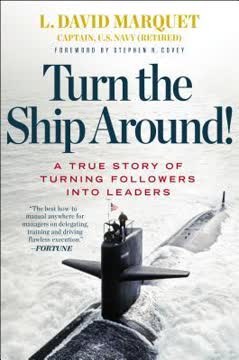
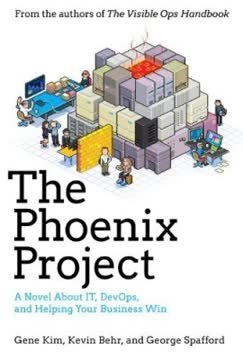
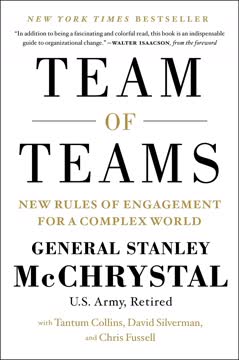
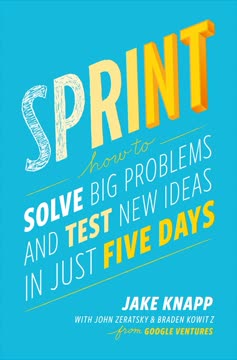

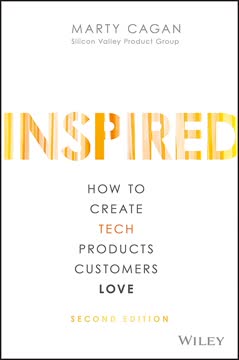




Download PDF
Download EPUB
.epub digital book format is ideal for reading ebooks on phones, tablets, and e-readers.
